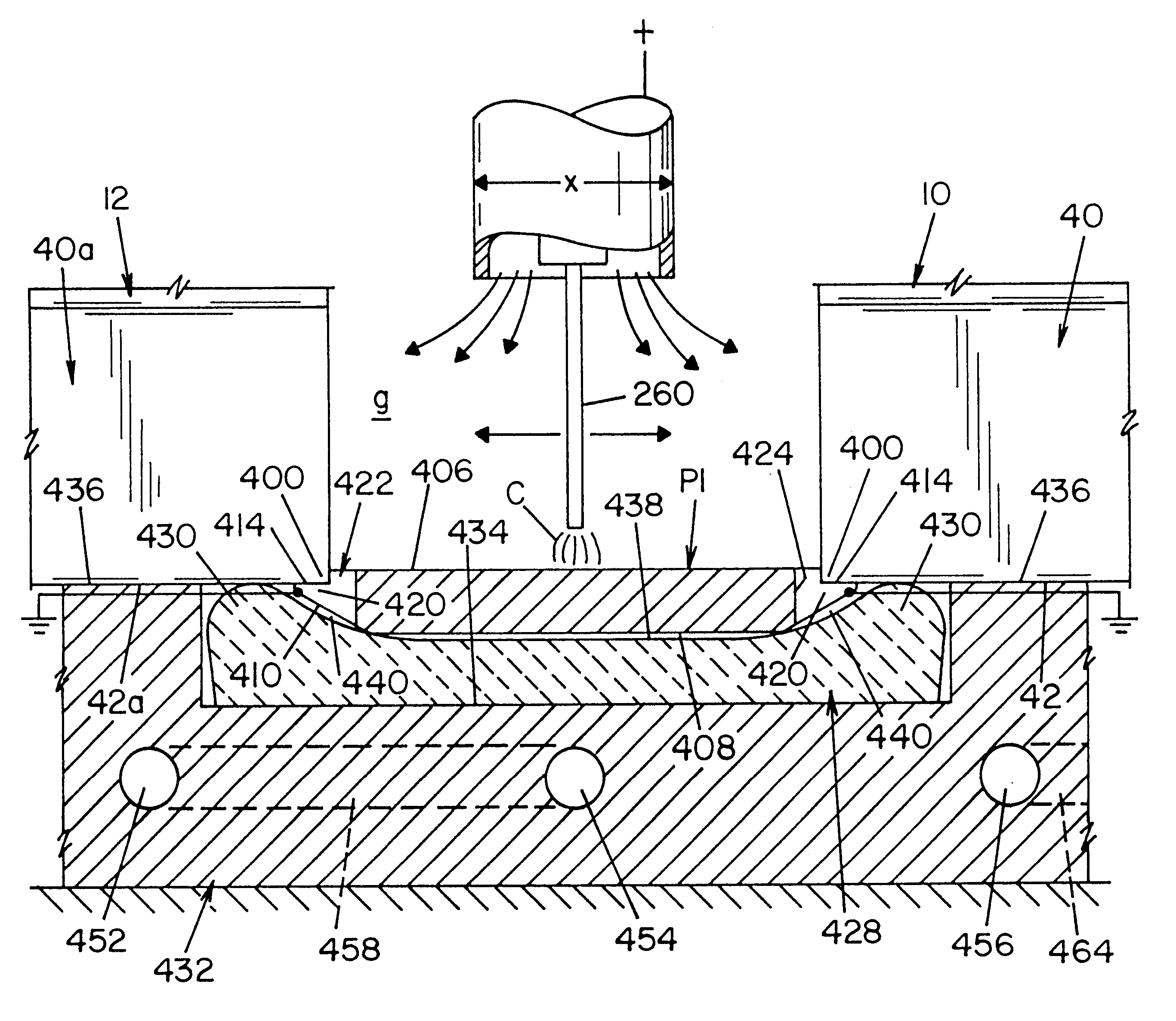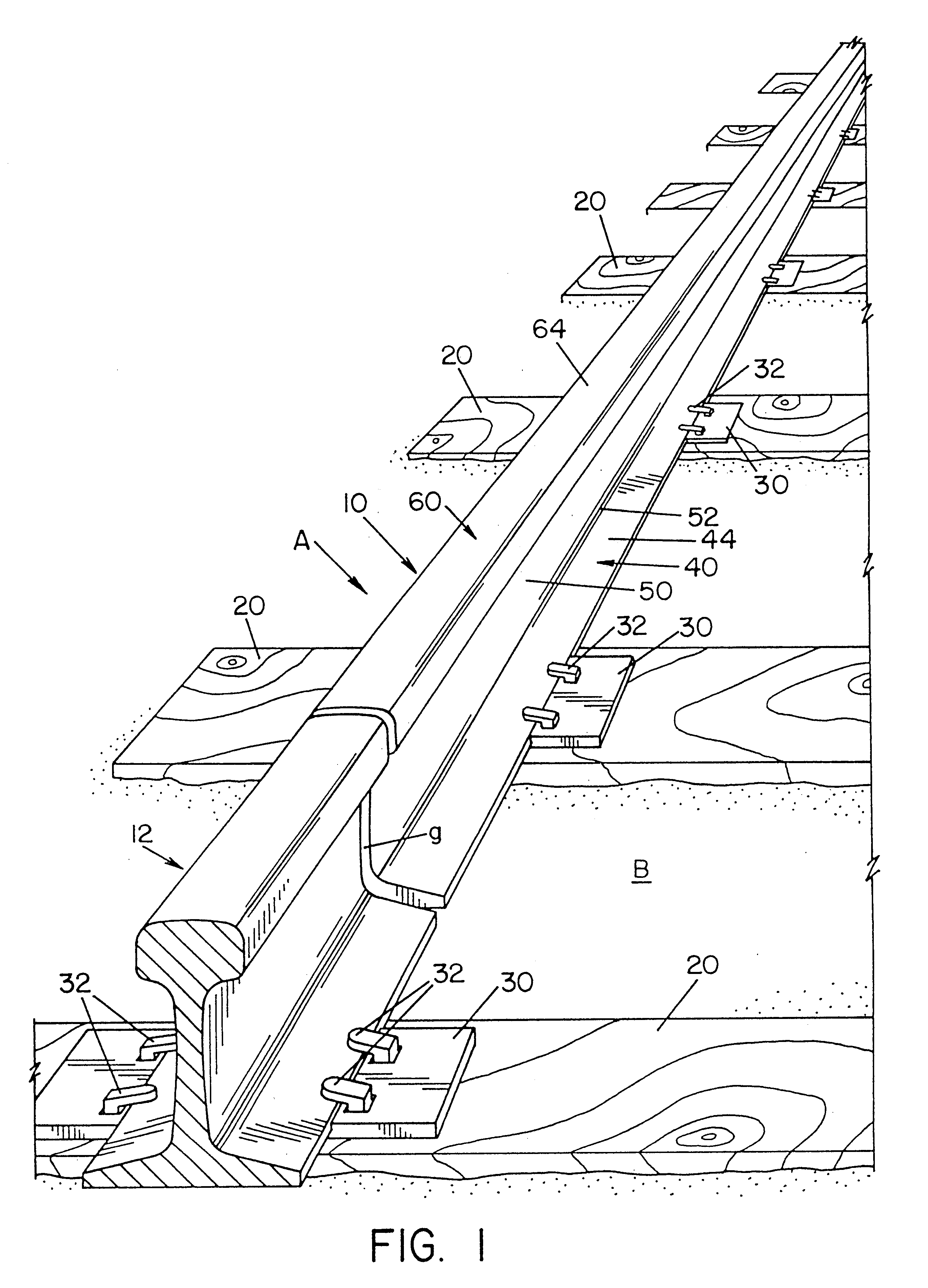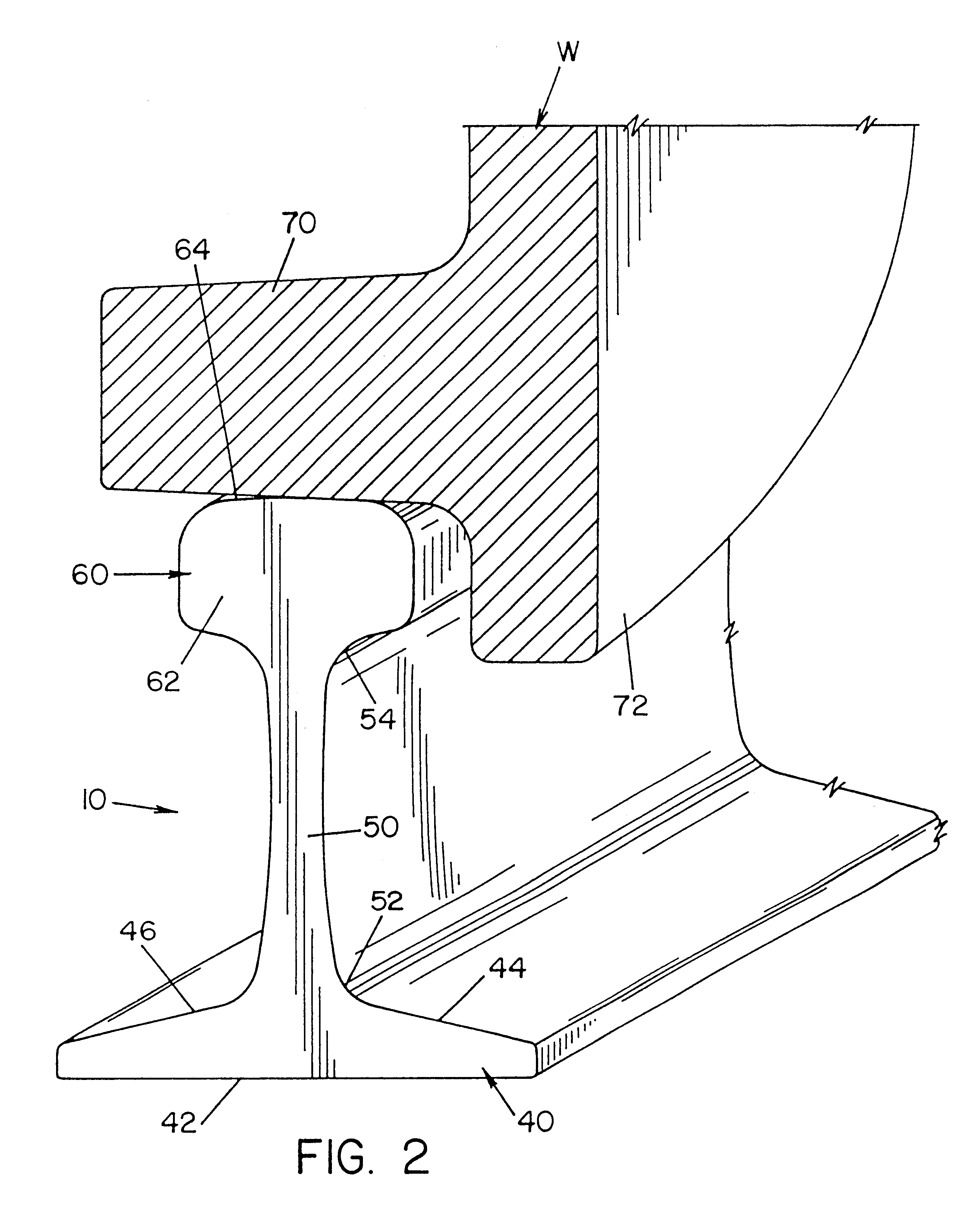Method and system for welding railroad rails
a technology for railroad rails and rails, which is applied in the direction of auxillary welding devices, soldering devices, ways, etc., can solve the problems of little slag, inclusions in metal, and substantial increase in the desire to actually butt weld the rails, so as to prevent the loss of molten metal, prevent over heating of weld deposits, and improve the ductility of welded joints
- Summary
- Abstract
- Description
- Claims
- Application Information
AI Technical Summary
Benefits of technology
Problems solved by technology
Method used
Image
Examples
Embodiment Construction
Referring now to the figures wherein the drawings are for the purpose of illustrating the preferred embodiment of the invention only and not for the purpose of limiting same, FIG. 1 shows a railroad rail A laid on right-of-way bed B and including rails 10, 12 to be joined to form a continuous welded rail (CWR) and supported on bed B by ties 20, steel support caps 30 and spikes 32. Rails 10, 12 are spaced to define a gap g which is to be filled by molten metal to join the two rails 10, 12 together as a continuous rail in the field, as opposed to a plant assembly of continuous rail. Gap g can be the gap between two sections of rail to be repaired or the gap between two sections of rail which are to be initially installed as a continuous welded rail system. If the gap g is used for repairing, it is sometimes necessary to cut the rails and insert a long rail section. This process is used for repairing rails which have fractures, joints which have fractured or joints which are defective....
PUM
| Property | Measurement | Unit |
|---|---|---|
| thickness | aaaaa | aaaaa |
| thickness | aaaaa | aaaaa |
| width | aaaaa | aaaaa |
Abstract
Description
Claims
Application Information
 Login to View More
Login to View More - R&D
- Intellectual Property
- Life Sciences
- Materials
- Tech Scout
- Unparalleled Data Quality
- Higher Quality Content
- 60% Fewer Hallucinations
Browse by: Latest US Patents, China's latest patents, Technical Efficacy Thesaurus, Application Domain, Technology Topic, Popular Technical Reports.
© 2025 PatSnap. All rights reserved.Legal|Privacy policy|Modern Slavery Act Transparency Statement|Sitemap|About US| Contact US: help@patsnap.com



